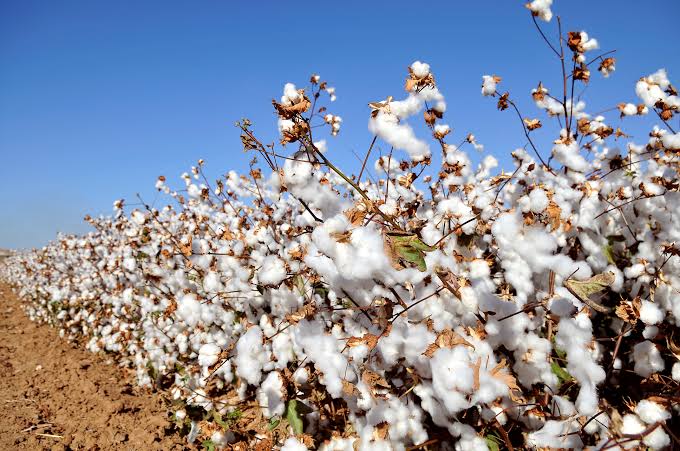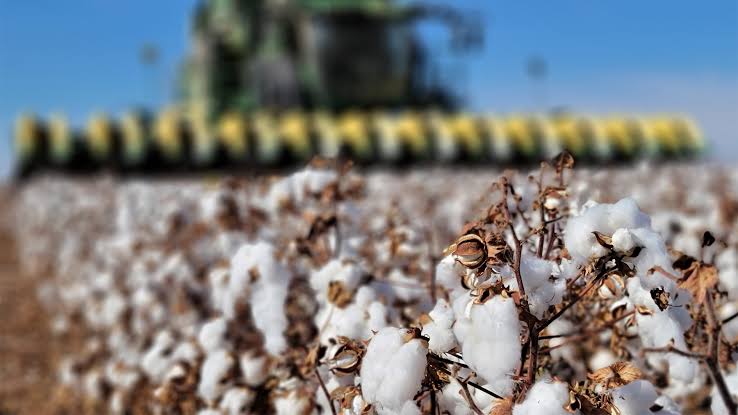Cotton plants are fascinating and essential to our daily lives. These plants, scientifically known as Gossypium, play a crucial role in providing the soft and breathable fiber that we commonly use in clothing and various textiles.
In warm climates, cotton plants thrive, showing off their vibrant green leaves and delicate flowers. The magic begins when the fluffy cotton bolls appear, containing the cotton fibers. Farmers carefully cultivate and harvest these bolls to gather the cotton that eventually becomes the fabric we wear.
One remarkable aspect of cotton plants is their adaptability. They can endure diverse conditions, growing in soils ranging from sandy to clayey. This resilience makes cotton a widely cultivated crop across the globe.
As the cotton plant matures, it undergoes a series of growth stages. From germination to flowering and then fruiting, each phase contributes to the development of cotton fibers. Patience is key for farmers, as the entire process takes several months.
Cotton plants are not just about their fibers; they also offer benefits to the environment. They have the ability to absorb carbon dioxide during their growth, aiding in mitigating the impacts of climate change. Additionally, cotton cultivation promotes biodiversity, supporting various insects and birds in the ecosystem.
While cotton has a rich history dating back thousands of years, its cultivation has evolved with technological advancements. Today, modern farming techniques, including the use of machinery and genetically modified varieties, contribute to increased cotton production.
However, it’s crucial to note that cotton farming is not without challenges. Pest infestations and the need for substantial water resources are issues that farmers grapple with. Sustainable practices and research efforts strive to address these concerns, aiming for a more eco-friendly and efficient cotton industry.
In the textile world, cotton’s popularity is unmatched. Its fibers are valued for their comfort, breathability, and versatility. From T-shirts to bed linens, cotton products are a staple in households worldwide.
In addition, cotton plants are more than just sources of fabric; they are complex organisms intertwined with agriculture, ecology, and our daily lives. Their journey from seed to fiber involves intricate processes, and their adaptability makes them a vital crop on a global scale. As we continue to appreciate the comfort of cotton in our everyday garments, it’s essential to recognize and support sustainable practices in the cultivation of this remarkable plant.
Moreover, the economic significance of cotton plants cannot be overstated. Cotton is a major cash crop, providing livelihoods for millions of farmers and supporting entire economies in various regions. The cultivation and trade of cotton contribute significantly to the agricultural sector, creating employment opportunities and fostering economic growth.
As technology advances, the textile industry constantly seeks innovations in cotton processing. Efforts to improve the efficiency of ginning, the process of separating cotton fibers from seeds, enhance the overall productivity of cotton farms. This, in turn, contributes to the availability of affordable cotton products for consumers worldwide.
Beyond its economic importance, cotton has played a role in shaping cultural practices and traditions. The use of cotton dates back to ancient civilizations, and its significance is deeply rooted in the fabric of societies across the globe. From traditional clothing to symbolic rituals, cotton has woven itself into the cultural tapestry of numerous communities.
One notable aspect of cotton is its role in the global trade landscape. Cotton-producing countries often engage in international trade, exporting raw cotton or finished products. This interdependence fosters global connections, influencing economies and trade relationships on a grand scale.
While cotton has earned its place as a valuable resource, there are ongoing efforts to address environmental concerns associated with its cultivation. Sustainable farming practices, water conservation initiatives, and the development of eco-friendly alternatives are pivotal in ensuring the long-term viability of cotton as a crop.
In recent years, the fashion industry’s focus on sustainability has prompted a closer look at the environmental impact of cotton production. Initiatives promoting organic cotton, reduced water usage, and fair labor practices have gained traction, emphasizing the need for a more responsible approach to cotton cultivation.
However, cotton plants are intricate organisms with far-reaching impacts on our lives, economies, and the environment. From the fields where they flourish to the garments we wear, the journey of cotton involves a dynamic interplay of science, culture, and commerce. As we appreciate the comfort of cotton in our everyday lives, it becomes imperative to support and advocate for practices that ensure the sustainability and ethical cultivation of this invaluable plant.
Read Also: Principles of Feeding Pigs and Feed Resources
Growing and Care Guide of Cotton Plants

Growing and caring for cotton plants requires attention to various factors to ensure a successful harvest. Here’s a brief guide to help you nurture healthy cotton plants:
1. Planting: Choose a well-drained soil with a slightly acidic to neutral pH (around 5.8 to 7.5).
Plant cotton seeds or seedlings in a location with full sunlight, as cotton thrives in warm conditions.
2. Watering: Cotton plants need regular watering, especially during dry periods. However, be cautious not to overwater, as excessive moisture can lead to diseases.
3. Fertilizing: Provide balanced fertilizer when planting and supplement with nitrogen during the growing season. Consult local guidelines for specific fertilizer recommendations.
4. Pruning: While cotton plants typically don’t require extensive pruning, removing lower branches can improve airflow and reduce the risk of pests and diseases.
5. Pest Control: Keep an eye out for common cotton pests such as aphids, boll weevils, and spider mites. Use appropriate insecticides or introduce natural predators to manage infestations.
6. Disease Prevention: Prevent fungal diseases by spacing plants adequately to encourage air circulation. Additionally, avoid overhead watering to minimize humidity around the plants.
7. Harvesting: Cotton is ready for harvest when the bolls begin to split open. Harvest when the weather is dry to prevent fiber contamination and ensure better quality.
8. Ginning: After harvesting, the ginning process separates cotton fibers from seeds. Modern gins use machinery, but small-scale growers may need to explore manual methods.
9. Sustainable Practices: Consider implementing sustainable farming practices, such as organic cultivation, reduced water usage, and integrated pest management, to minimize environmental impact.
10. Crop Rotation: Rotate cotton crops with other plants to break pest and disease cycles and maintain soil fertility.
11. Stay Informed: Stay updated on the latest agricultural research and innovations related to cotton cultivation. This knowledge can help improve your farming practices and increase yield.
Uses of Cotton Plants
Cotton plants have a myriad of uses, touching various aspects of our daily lives. Here’s an overview of the diverse applications of cotton:
1. Textiles and Apparel: The primary use of cotton is in the production of textiles. Cotton fibers are spun into yarn and woven or knitted to create fabrics for clothing, including shirts, jeans, dresses, and undergarments.
2. Home Furnishings: Cotton is widely used in the manufacturing of home textiles such as bed sheets, pillowcases, towels, and curtains. Its softness and breathability make it a popular choice for comfortable and durable household items.
3. Industrial Products: Cotton fibers find applications in various industrial products, including filters, tapes, and threads. The strength and versatility of cotton make it suitable for diverse manufacturing processes.
4. Medical and Hygiene Products: Cotton is used in the production of medical supplies like bandages and cotton swabs due to its absorbent and hypoallergenic properties. It is also a component in hygiene products like cotton balls and sanitary pads.
5. Oil and Food Products: Cottonseed, a byproduct of cotton farming, is used to extract cottonseed oil. This oil is utilized in cooking and as an ingredient in certain food products.
6. Animal Feed: Cottonseed meal, a byproduct of cottonseed oil extraction, is used as a protein-rich feed supplement for livestock.
7. Paper Industry: Cotton fibers are employed in the paper industry to produce high-quality and durable paper products. Cotton paper is often used for stationery and archival purposes.
8. Seed Products: Cottonseed is crushed to produce cottonseed meal, oil, and hulls. These products have various agricultural and industrial applications, contributing to the overall sustainability of cotton cultivation.
9. Sustainable Materials: With an increasing focus on sustainability, cotton is used in the production of eco-friendly and organic textiles. Organic cotton farming practices aim to reduce environmental impact and promote ethical cultivation.
10. Art and Craft: Cotton balls and swabs are commonly used in art and craft projects. The soft and absorbent nature of cotton makes it a versatile material for creative endeavors.
11. Erosion Control: Cotton fibers can be used in erosion control applications. They help stabilize soil and prevent erosion in certain landscaping and environmental restoration projects.
12. Fuel Source: Cottonseed can be processed into biodiesel, providing an alternative and renewable energy source.
In essence, the uses of cotton plants extend far beyond the realm of clothing, touching agriculture, industry, healthcare, and more. The versatility and comfort associated with cotton make it a fundamental and valuable crop with a broad range of applications in our modern world.
Read Also: The Different Breeds of Pigs
Economic Benefits of Cotton Plants

The cultivation of cotton plants contributes significantly to the global economy, providing a range of economic benefits. Here’s an overview of the economic advantages associated with cotton plants:
1. Employment Opportunities: Cotton farming creates jobs at various stages of the production process, from planting and cultivation to harvesting and processing. This employment extends to rural communities, supporting livelihoods and fostering economic stability.
2. Cash Crop Revenue: Cotton is a major cash crop with a substantial market value. The sale of raw cotton and cotton products generates revenue for farmers, agricultural industries, and the countries engaged in cotton production.
3. Global Trade and Exports: Cotton is a key player in international trade, with many countries engaging in the export and import of cotton and cotton products. This trade fosters economic connections and contributes to the overall global economy.
4. Textile Industry Growth: The textile industry heavily relies on cotton as a primary raw material. The demand for cotton fibers fuels the growth of the textile sector, which, in turn, contributes to economic development and industrialization.
5. Value Addition in Processing: Cotton processing industries, including ginning and textile manufacturing, add value to the raw cotton, creating finished products for domestic consumption and export. This value addition enhances economic returns.
6. Technology and Innovation: The cotton industry drives innovation in agricultural practices, machinery, and processing technologies. Technological advancements lead to increased efficiency, reduced production costs, and improved overall productivity, positively impacting the economy.
7. Rural Development: Cotton cultivation often takes place in rural areas, and the economic benefits extend to these communities. Infrastructure development, educational opportunities, and improved living standards are often observed in regions where cotton farming is prevalent.
8. Revenue Diversification: For countries heavily reliant on agriculture, cotton cultivation provides an additional source of revenue, diversifying the income streams of farmers and contributing to economic resilience.
9. Supporting Ancillary Industries: The cotton industry supports various ancillary sectors, including transportation, packaging, and marketing. These interconnected industries create a network that amplifies the economic impact of cotton cultivation.
10. Contribution to GDP: The economic value generated by the entire cotton value chain, from cultivation to manufacturing and trade, significantly contributes to the Gross Domestic Product (GDP) of cotton-producing countries.
11. Research and Development Investment: Governments and private entities invest in research and development related to cotton farming, leading to advancements in agricultural practices and the creation of disease-resistant or high-yielding cotton varieties. This investment supports long-term sustainability and economic growth.
In conclusion, the economic benefits of cotton plants are multifaceted, impacting farmers, industries, and entire nations. The global demand for cotton and its products ensures that it remains a crucial contributor to economic development and prosperity on both local and international scales.
Read Also: Microbiological Analysis of Air
